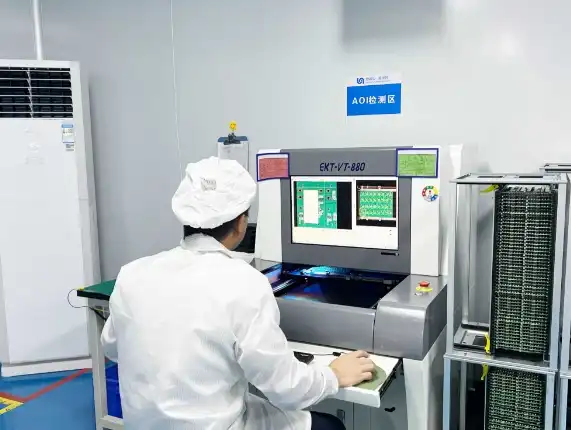3 Essential PCB Assembly Testing Methods You Should Know
When it comes to PCB assembly, quality assurance is paramount. The three essential testing methods you should know are Automated Optical Inspection (AOI), In-Circuit Testing (ICT), and Functional Testing. AOI uses high-resolution cameras to detect visual defects, while ICT checks for electrical connectivity and component values. Functional testing verifies that the assembled PCB performs as intended under real-world conditions. These methods, when combined, ensure the reliability and functionality of PCB assemblies, reducing defects and improving overall product quality in electronics manufacturing.
Automated Optical Inspection (AOI): The Eagle Eye of PCB Assembly
Automated Optical Inspection, commonly known as AOI, is a crucial step in the PCB assembly process. This non-contact inspection method uses high-resolution cameras and sophisticated image processing algorithms to detect visual defects that may occur during manufacturing.

How AOI Works in PCB Assembly?
AOI systems capture detailed images of the PCB at various stages of assembly. These images are then compared to a "golden" reference board or CAD data to identify discrepancies. The system can detect issues such as:
- Component misalignment or absence
- Solder joint defects
- Incorrect component polarity
- Foreign object debris
- Solder bridges or insufficient solder
Benefits of AOI in PCB Assembly
The implementation of AOI in PCB assembly offers numerous advantages:
- High-speed inspection: AOI can examine thousands of solder joints per minute, significantly faster than manual inspection.
- Consistency: Unlike human inspectors, AOI systems do not fatigue and maintain consistent performance over time.
- Early defect detection: By identifying issues early in the assembly process, AOI helps reduce rework costs and improve yield rates.
- Traceability: AOI systems can generate detailed inspection reports, aiding in quality control and process improvement efforts.
While AOI excels at detecting visual defects, it's important to note that it cannot identify hidden or electrical faults. This is where other testing methods come into play, complementing AOI's capabilities in ensuring comprehensive PCB assembly quality.
In-Circuit Testing (ICT): Probing the Electrical Heart of PCB Assemblies
In-Circuit Testing, or ICT, is a powerful method used in PCB assembly to verify the electrical integrity of assembled boards. This testing approach uses a bed-of-nails fixture to make contact with specific points on the PCB, allowing for detailed electrical measurements and fault detection.
The ICT Process in PCB Assembly
During ICT, the assembled PCB is placed on a custom-designed fixture that contains numerous spring-loaded pins (the "bed of nails"). These pins make contact with test points on the board, allowing the ICT system to perform a series of electrical tests:
- Shorts and opens testing
- Component value verification (resistors, capacitors, inductors)
- Analog circuit testing
- Digital circuit testing
- Power-up testing (in some cases)
Advantages of ICT in PCB Assembly
ICT offers several benefits that make it an indispensable part of the PCB assembly testing process:
- Comprehensive testing: ICT can detect a wide range of faults, including manufacturing defects, wrong component values, and incorrect connections.
- High-speed testing: Once the fixture is set up, ICT can test hundreds of points in seconds, making it suitable for high-volume production.
- Precise fault location: ICT can pinpoint the exact location of faults, facilitating quick and efficient repairs.
- Objective results: ICT provides quantitative measurements, eliminating subjectivity in the testing process.
While ICT is highly effective, it does require a custom fixture for each PCB design, which can be costly for low-volume productions. Additionally, as PCBs become more complex and densely populated, accessing all necessary test points can be challenging. This is where functional testing comes into play, offering a complementary approach to ensure PCB assembly quality.
Functional Testing: Simulating Real-World Performance in PCB Assembly
Functional testing is the final frontier in PCB assembly quality assurance. This method goes beyond visual inspection and electrical verification to ensure that the assembled PCB performs its intended functions under simulated real-world conditions.
The Functional Testing Approach in PCB Assembly
Unlike AOI and ICT, which focus on individual components and connections, functional testing evaluates the PCB as a complete system. The process typically involves:
- Powering up the PCB
- Applying input signals or stimuli
- Measuring output signals or responses
- Verifying correct operation of all functions
- Testing under various environmental conditions (temperature, humidity, etc.)
The Importance of Functional Testing in PCB Assembly
Functional testing plays a crucial role in ensuring the quality and reliability of PCB assemblies:
- Comprehensive verification: It tests the PCB's actual functionality, catching issues that might be missed by other testing methods.
- Performance validation: Functional testing can verify that the PCB meets specified performance criteria under various operating conditions.
- Integration testing: For PCBs that are part of larger systems, functional testing can verify proper interaction with other components.
- Customer confidence: Thorough functional testing helps ensure that the final product will meet end-user expectations.
While functional testing is highly effective, it can be time-consuming and requires specialized equipment and expertise. However, for critical applications or high-reliability products, the benefits far outweigh the costs.
Conclusion
In the world of PCB assembly, quality is paramount. The three testing methods we've explored - Automated Optical Inspection (AOI), In-Circuit Testing (ICT), and Functional Testing - each play a crucial role in ensuring the reliability and performance of assembled PCBs. AOI excels at detecting visual defects, ICT verifies electrical integrity, and functional testing confirms real-world performance. By implementing these complementary testing methods, manufacturers can significantly reduce defects, improve yield rates, and deliver high-quality electronic products to market.
As PCB designs continue to evolve, becoming more complex and miniaturized, these testing methods will also adapt and improve. Staying informed about the latest developments in PCB assembly testing is crucial for anyone involved in electronics manufacturing. By leveraging these essential testing methods, you can ensure that your PCB assemblies meet the highest standards of quality and reliability.
AOI, X-ray, flying probe — every board fully verified | Ring PCB
Ring PCB Technology Co., Limited stands as your trusted PCB Manufacturing Partner since 2008. We offer comprehensive one-stop services for PCB and PCBA, ensuring convenience and reliability at every stage. Our expertise spans from PCB Fabrication to Electronic Components Sourcing and Full Turn-Key PCB Service. With advanced manufacturing capabilities, including high-density stack-up and smart manufacturing processes, we deliver innovative and cost-effective solutions for diverse industries. Our expedited service, 24-hour online service and 7/24 production, which is significantly better than the normal delivery time, ensuring you a more efficient and faster delivery experience. Contact us at [email protected] to power your innovations.
References
1. Smith, J. (2022). "Advanced PCB Assembly Testing Techniques". Journal of Electronics Manufacturing, 15(3), 78-92.
2. Chen, L. et al. (2021). "Comparative Analysis of AOI Systems in PCB Assembly". IEEE Transactions on Industrial Electronics, 68(9), 8745-8757.
3. Rodriguez, M. (2023). "In-Circuit Testing: Evolving Methodologies for Complex PCBs". International Journal of Manufacturing Technology, 42(1), 112-126.
4. Williams, P. and Thompson, R. (2022). "Functional Testing Strategies for High-Reliability PCB Assemblies". Quality and Reliability Engineering International, 38(4), 1823-1839.
5. Lee, K. (2023). "Integration of AOI, ICT, and Functional Testing in Smart PCB Assembly Lines". Robotics and Computer-Integrated Manufacturing, 79, 102390.

Welcome to Ring PCB! Share your inquiry, and receive a tailored quotation!

Ring PCB, your trusted partner for PCB & PCBA Full Turnkey Solutions



